There are an enormous number of AI tools that can create a video. Just enter a prompt, and “poof,” you’ve got yourself an ultra-realistic avatar reading the news.
Leading the pack is Sora by OpenAI, the same company that created ChatGPT.
It’s a testament to the fact that OpenAI has been pushing for more creative-leaning AI tools.
But creating and watching videos are two different things.
Can ChatGPT explain what really happened in Interstellar—like how Cooper survived falling into the black hole or if the fifth-dimensional beings were real?
The short answer is no.
And nope, we aren’t talking about dissecting the plot of Interstellar. We’re talking about whether ChatGPT has eyes.
It’s complicated—but we’re here to clear up all the myths.
Let’s dive into what’s possible, what’s not, and the creative workarounds that can help bridge the gap.
Short Answer: Not Exactly
ChatGPT can’t watch videos.
Unlike humans, who can simply press play and absorb visual information over time, ChatGPT lacks built-in video processing capabilities.
It can’t “stream” content or understand the temporal aspects of video the way humans naturally do.
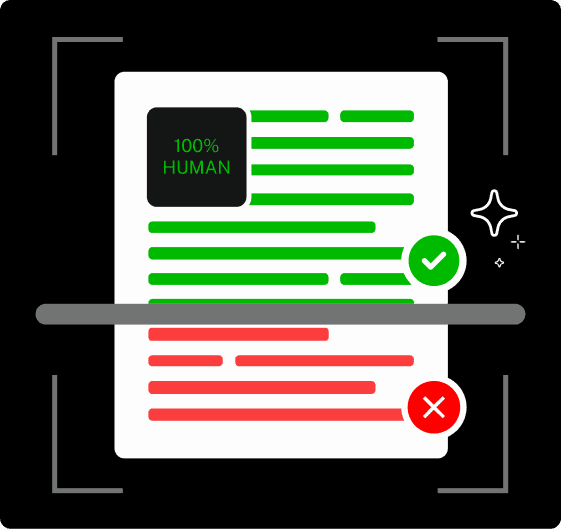

Never Worry About AI Detecting Your Texts Again. Undetectable AI Can Help You:
- Make your AI assisted writing appear human-like.
- Bypass all major AI detection tools with just one click.
- Use AI safely and confidently in school and work.
This limitation stems from how large language models like ChatGPT are designed. They process text inputs and generate text outputs.
They don’t have native capabilities to decode video files or process moving images over time.
What ChatGPT Can and Can’t Do With Videos
Before we explore workarounds, let’s get clear on the boundaries:
ChatGPT can:
- Process text descriptions about videos
- Analyze transcripts from videos
- Work with static images (GPT-4 with Vision)
- Generate ideas for video content
- Help write scripts for videos
ChatGPT cannot:
- Directly watch or process video files
- Understand motion or temporal sequences in videos
- Extract information from a video without human assistance
- Identify specific timestamps in video content
- Recognize sounds, music, or audio elements in videos
The distinction is important. While ChatGPT can’t watch videos directly, it can still be incredibly useful when working with video content.
However, for specialized tasks like authenticity verification, general LLMs fall short.
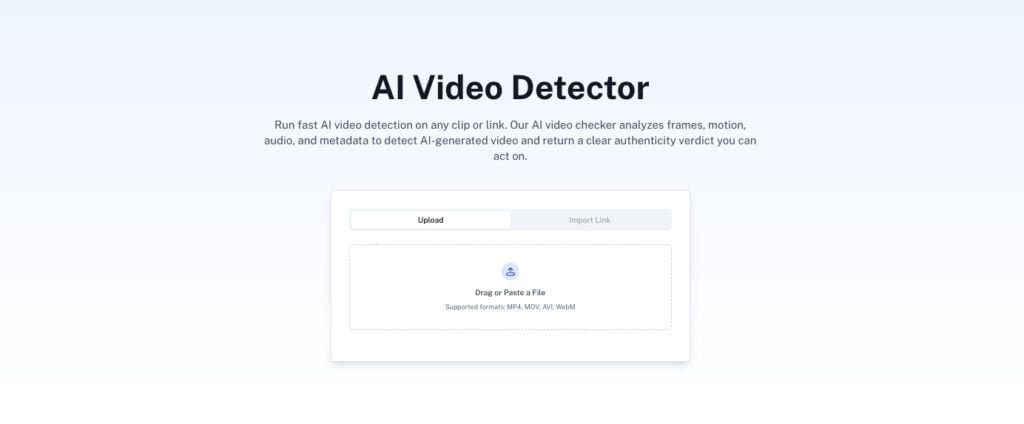
For example, Undetectable AI’s AI Video Detector can analyze deepfake algorithms in video data, showcasing how specialized tools analyze video data versus general LLMs.
You just need the right approach.

Workarounds: How to Use ChatGPT With Videos
Despite its limitations, there are several effective ways to use ChatGPT with video content:
- Transcript-based analysis: Convert your video to text using transcription services like Otter.ai, Descript, or YouTube’s auto-generated captions. Then feed this transcript to ChatGPT for analysis, summarization, or content extraction.
- Manual description: Watch the video yourself and describe the key elements to ChatGPT. This works well for shorter clips or when you need to focus on specific aspects of the video.
- Frame extraction: For visual analysis, you can extract key frames from the video and submit them to GPT-4 with Vision. This works especially well for videos where visual elements are crucial to understanding.
- Combination approach: For a comprehensive analysis, combine a transcript with selected frames and your own context notes. This gives ChatGPT the most complete picture possible without actually “watching” the video.
Each approach has its strengths and weaknesses.
Transcripts miss visual nuances, manual descriptions are subjective, and frame extraction misses temporal relationships.
But with thoughtful application, these methods can unlock significant value from video content and AI video editing.
Extract Transcripts Effortlessly with the YouTube Transcript Generator
If you want to make the most out of video analysis, the first step is getting a clean, accurate transcript — and that’s exactly what Undetectable AI’s Youtube Transcript Generator does best.
Instead of spending hours transcribing manually or relying on low-accuracy auto captions, this tool instantly converts any YouTube video into a precise, formatted transcript ready for analysis.
You can feed the transcript directly into ChatGPT to summarize, extract key ideas, or even turn it into a blog post or SEO article.

It’s the easiest way to bridge the gap between video and text-based AI workflows.
Just paste the video link, generate the transcript, and you’ll have a ready-to-use document for ChatGPT to process — no technical setup, no friction.
By combining this with ChatGPT’s analysis and Undetectable AI’s content tools, you can transform raw video content into professional-grade insights, summaries, or repurposed assets in minutes.
GPT-4 with Vision: Can It Watch Video Frames?
GPT-4 with Vision represents a significant advancement in AI’s ability to work with visual content.
But it’s important to understand what this capability actually entails.
GPT-4 with Vision can analyze static images uploaded by users.
It can identify objects, read text, interpret charts, and understand the general content of an image.
It’s powerful, but it’s not the same as watching a video.
You could theoretically feed GPT-4 with Vision a sequence of frames from a video, but this has several limitations:
- It would process each frame independently, missing the continuity between them
- You’d be limited to a small number of frames
- The context window has finite space for images
- The process would be manual and time-consuming
That said, for certain use cases, analyzing key frames might be sufficient.
For example, if you want ChatGPT to help analyze a product demonstration video, uploading frames showing the product from different angles might provide enough context for meaningful assistance.
Plugins & Tools That Add Video Functionality
The ChatGPT plugin ecosystem has expanded to include tools that help bridge the video gap:
- Video Insights: Some plugins can connect to video platforms and extract metadata, comments, or other text-based information about videos.
- Transcription tools: Plugins that automatically generate transcripts from video URLs, making it easier to bring video content into ChatGPT.
- Search plugins: Tools that can find relevant videos based on queries and extract key information from them.
- Content analysis plugins: Specialized tools that can analyze video content and provide structured data for ChatGPT to work with.
These plugins don’t give ChatGPT the ability to watch videos directly, but they streamline the process of extracting useful information from video content and bringing it into a format ChatGPT can work with.
Examples of ChatGPT Use Cases With Video Content
Despite the limitations, there are many practical ways to use ChatGPT with video content:
- Content summarization: Use ChatGPT to create concise summaries of lengthy video transcripts, which are perfect for creating video descriptions or “key takeaways” sections.
- Educational material extraction: Feed transcripts from educational videos to ChatGPT to extract important concepts, definitions, and learning points.
- Script development: Use ChatGPT to help refine video scripts, ensuring they’re engaging, clear, and well-structured.
- Content repurposing: Transform video content into blog posts, social media updates, or newsletter content with ChatGPT’s help.
- SEO optimization: Generate video titles, descriptions, and tags that help your content perform better in search results.
- Accessibility improvement: Create better closed captions or descriptive text for videos to make them more accessible.
You can do it like this: Record your thoughts as a casual video, use an automated service to generate a transcript, feed that to ChatGPT to organize and refine the ideas, then use that output as the basis for her final script.
The result combines your authentic voice with polished delivery, yet, it’s still not ready.
In the next section, we’ll show you how to maximize your workflow’s full potential.
How Undetectable AI Tools Can Enhance This Workflow
Working with video content through ChatGPT is already powerful, but adding Undetectable AI’s specialized tools turns it into a full-blown content creation machine.
Here’s how to upgrade every step of the process and make your output not only cleaner but undetectable and more human than ever.
AI Paraphraser
Raw video transcripts are like the director’s cut nobody asked for, full of filler words, awkward pauses, and the occasional “uhhh.”
Undetectable AI’s AI Paraphraser steps in to rewrite that messy text, smoothing out phrasing while keeping the original meaning crystal clear.
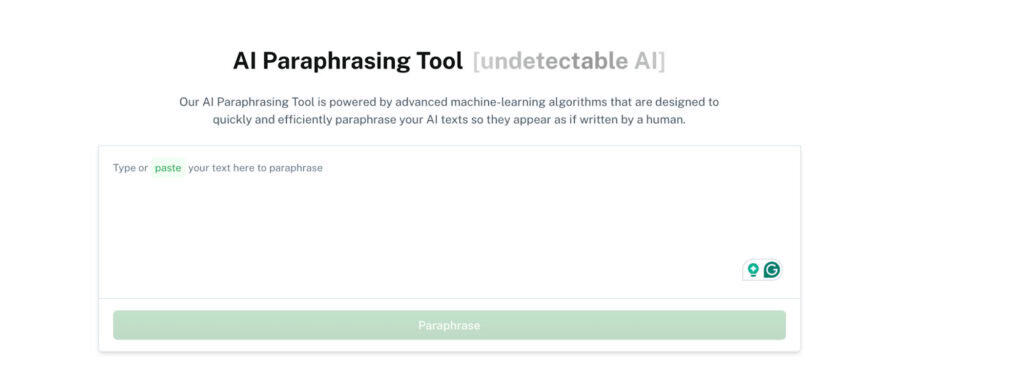
Say you have a 40-minute podcast transcript. Instead of editing it manually (or rage-quitting), you let the Paraphraser reshape it into clean, professional-grade prose.
After paraphrasing, click the Humanize button to instantly make your text sound like it came from an actual person, not a transcription robot.
AI SEO Writer
Once ChatGPT extracts key insights from your video, the AI SEO Writer can transform those into full-fledged SEO blog posts.
It goes beyond simple rewriting, it optimizes for keywords, structures content like a pro, and even weaves in SEO-friendly headings, subheadings, and transitions.
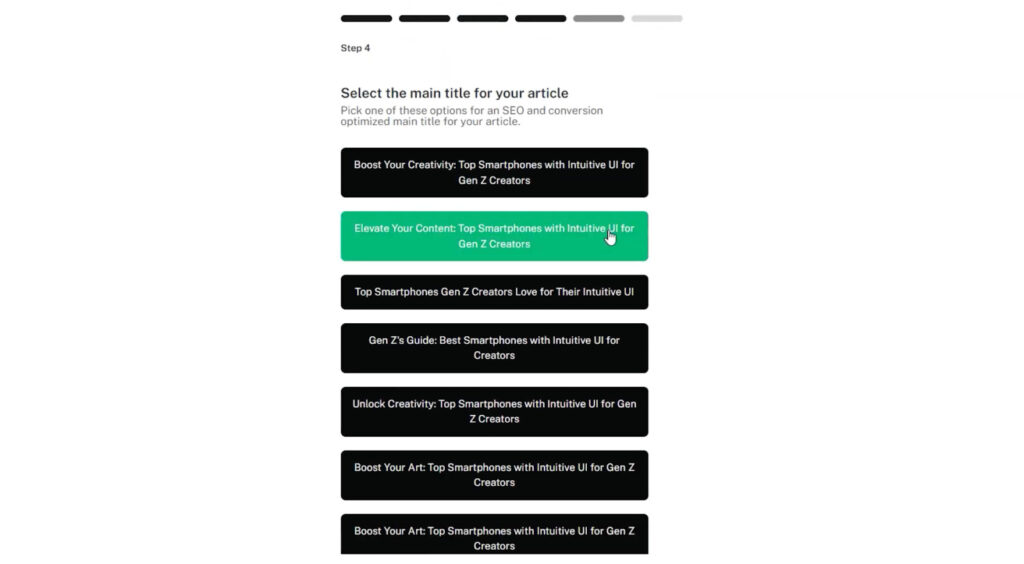
Want your video breakdown to rank on Google? This tool lets you generate SEO-rich articles that don’t just survive AI detectors, they dominate search results.
This isn’t your average blog generator. Undetectable’s SEO Writer humanizes your content, so it doesn’t trip up AI detection tools like GPTZero or Originality.ai.
AI Essay Writer
Video interviews and educational webinars are full of valuable ideas, but they often stay trapped in video format.
The AI Essay Writer extracts those golden nuggets and builds full-length, well-researched articles around them, ready for publishing or academic use.
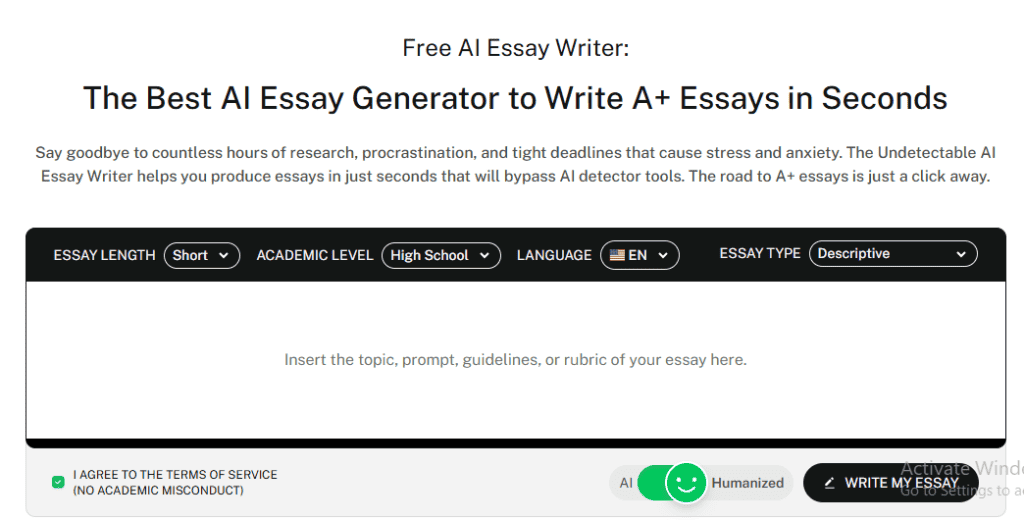
Instead of posting another “here’s the link to our webinar” tweet, you can turn that conversation into a polished, A+ article that deepens your authority and expands your reach.
Undetectable’s Essay Writer even offers citation options, helping you keep things credible and compliant.
AI Humanizer
Now end it with a cherry on top cause even the best AI summaries can feel a little… robotic.
Enter the AI Humanizer.
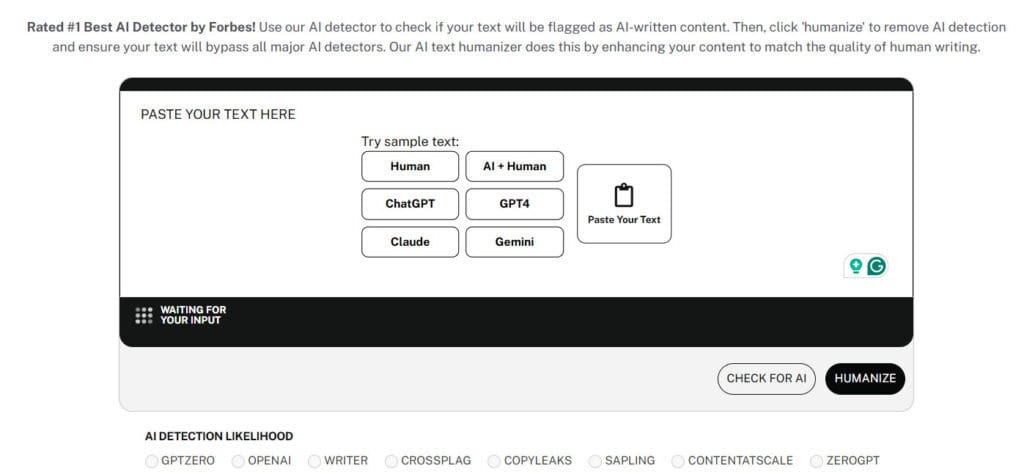
This tool rewires your AI-assisted writing to add authentic flow, human rhythm, and subtle imperfections that fool even the sharpest AI detectors.
The Humanizer helps your work feel alive—and most importantly, undetectable.
So the full upgraded workflow looks like this:
- Transcribe the video ➔
- Paraphrase the messy transcript ➔
- Extract insights with ChatGPT ➔
- Turn into articles or SEO content ➔
- Humanize it for the real world ➔
- Publish without fear of AI detection
When you combine ChatGPT with Undetectable AI’s suite of tools, you go beyond repurposing video content and build authentic, human-grade assets that can dominate across blogs, newsletters, SEO, and social media.
See how our AI Detector and Humanizer work—find them in the widget below!
Seeing Beyond the Screen: Can ChatGPT Really Watch Videos?
No, ChatGPT can’t watch videos, at least not in the way humans do.
But with the right approach, it can still be an invaluable tool for working with video content.
The key is understanding the limitations and designing workflows that play to ChatGPT’s strengths.
Use transcripts for content analysis. Extract keyframes for visual elements. Take stock of specialized plugins to streamline the process.
As AI capabilities continue to evolve, we’ll likely see more direct integration between language models and video content.
Multimodal AI models that can process text, images, audio, and video simultaneously are already in development.
But until those become widely available, the workarounds discussed here offer practical solutions for today’s content creators, especially when combined with powerful tools like Undetectable AI’s full suite of humanizing, optimizing, and AI-detection bypass solutions to ensure your output feels natural, polished, and ready for the real world.
